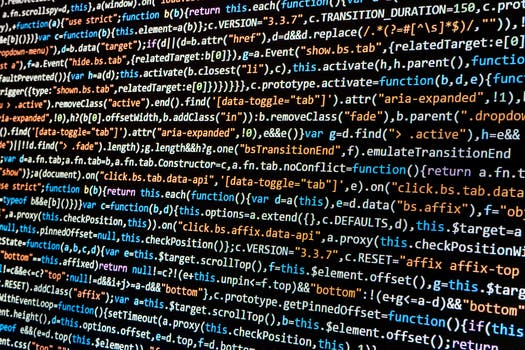TheDeveloperBlog.com
C-Sharp | Java | Python | Swift | GO | WPF | Ruby | Scala | F# | JavaScript | SQL | PHP | Angular | HTML
Golang range: Slice, String and Map
Use range expressions in for-loops on slices, strings and maps.Description: The first for-loop accesses only the indexes. The second accesses indexes and element values themselves.
SliceGolang program that uses range on slice
package main
import "fmt"
func main() {
colors := []string{"blue", "green", "red"}
// Use slice range with one value.
// ... This loops over the indexes of the slice.
for i := range colors {
fmt.Println(i)
}
// With two values, we get the element value at that index.
for i, element := range colors {
fmt.Println(i, element)
}
}
Output
0
1
2
0 blue
1 green
2 red
Note: In Go we refer to chars as runes. Rune has some technical meaning, but mostly is a fancy word for char.
Golang program that uses range on string
package main
import "fmt"
func main() {
// This is a string.
name := "golang"
// Use range on string.
// ... This accesses only the indexes of the string.
for i := range name {
fmt.Println(i)
}
// Use range with two variables on string.
// ... This is an index and a rune (char of the string).
for i, element := range name {
// Convert element to string to display it.
fmt.Println(i, string(element))
}
}
Output
0
1
2
3
4
5
0 g
1 o
2 l
3 a
4 n
5 g
Then: We use a range over the keys of the map. In Go, maps return their keys in a somewhat random (unpredictable) way.
Key, value: We can access both the key and the value at each pair of the map. This is an efficient way to loop over a map.
Golang program that uses range on map
package main
import "fmt"
func main() {
// An example map.
words := map[int]string{
0: "zero",
1: "one",
2: "two",
3: "three",
}
// Use range on map to loop over keys.
for key := range words {
fmt.Println(key)
}
// Range on map can access both keys and values.
for key, value := range words {
fmt.Println(key, value)
}
}
Output
2
3
0
1
3 three
0 zero
1 one
2 two
Related Links:
- Golang strconv, Convert Int to String
- Golang Odd and Even Numbers
- Golang Recover Built In: Handle Errors, Panics
- Learn Go Language Tutorial
- Golang html template Example
- Golang http.Get Examples: Download Web Pages
- Golang container list Example (Linked List)
- Golang base64 Encoding Example: EncodeToString
- Golang os exec Examples: Command Start and Run
- Golang String Between, Before and After
- Golang os.Remove: Delete All Files in Directory
- Golang First Words in String
- Golang flag Examples
- Golang Regexp Find Examples: FindAllString
- Golang Regexp Examples: MatchString, MustCompile
- Golang Index, LastIndex: strings Funcs
- Golang Compress GZIP Examples
- Golang Interface Example
- Golang 2D Slices and Arrays
- Golang Sscan, Sscanf Examples (fmt)
- Top 41 Go Programming (Golang) Interview Questions (2021)
- Golang Padding String Example (Right or Left Align)
- Golang Equal String, EqualFold (If Strings Are the Same)
- Golang map Examples
- Golang Map With String Slice Values
- Golang Array Examples
- Golang Remove Duplicates From Slice
- Golang If, Else Statements
- Golang ParseInt Examples: Convert String to Int
- Golang Strings
- Golang strings.Map func
- Golang bufio.ScanBytes, NewScanner (Read Bytes in File)
- Golang Built In Functions
- Golang bytes.Buffer Examples (WriteString, Fprintf)
- Golang Bytes: Slices and Methods
- Golang Caesar Cipher Method
- Golang Chan: Channels, Make Examples
- Golang Math Module: math.Abs, Pow
- Golang Reverse String
- Golang Struct Examples: Types and Pointers
- Golang path and filepath Examples (Base, Dir)
- Golang Substring Examples (Rune Slices)
- Golang Suffixarray Examples: New, Lookup Benchmark
- Golang switch Examples
- Golang Convert Map to Slice
- Golang Convert Slice to String: int, string Slices
- Golang Const, Var Examples: Iota
- Golang ROT13 Method
- Golang strings.Contains and ContainsAny
- Golang rand, crypto: Random Number Generators
- Golang String Literal Examples (Repeat Method)
- Golang ToLower, ToUpper String Examples
- Golang Trim, TrimSpace and TrimFunc Examples
- Golang Join Examples (strings.Join)
- Golang Len (String Length)
- Golang Convert String to Rune Slice (append)
- Golang JSON Example: Marshal, Unmarshal
- Golang Replace String Examples: Replacer, NewReplacer
- Golang nil (Cannot Use nil as Type)
- Golang Slice Examples
- Golang ListenAndServe Examples (HandleFunc)
- Golang Fibonacci Sequence Example
- Golang Time: Now, Parse and Duration
- Golang bits, OnesCount (Get Bitcount From Int)
- Golang Fprint, Fprintf and Fprintln Examples (fmt)
- Golang Func Examples
- Golang csv Examples
- Golang Fields and FieldsFunc
- Golang unicode.IsSpace (If Char Is Whitespace)
- Golang fmt.Println Examples
- Golang for Loop Examples: Foreach and While
- Golang ioutil.WriteFile, os.Create (Write File to Disk)
- Golang File Handling
- Golang range: Slice, String and Map
- Golang Readdir Example (Get All Files in Directory)
- Golang Sort Slice: Len, Less, Swap in Interface
- Golang Get Lines in File (String Slice)
- Golang Split Examples (SplitAfter, SplitN)